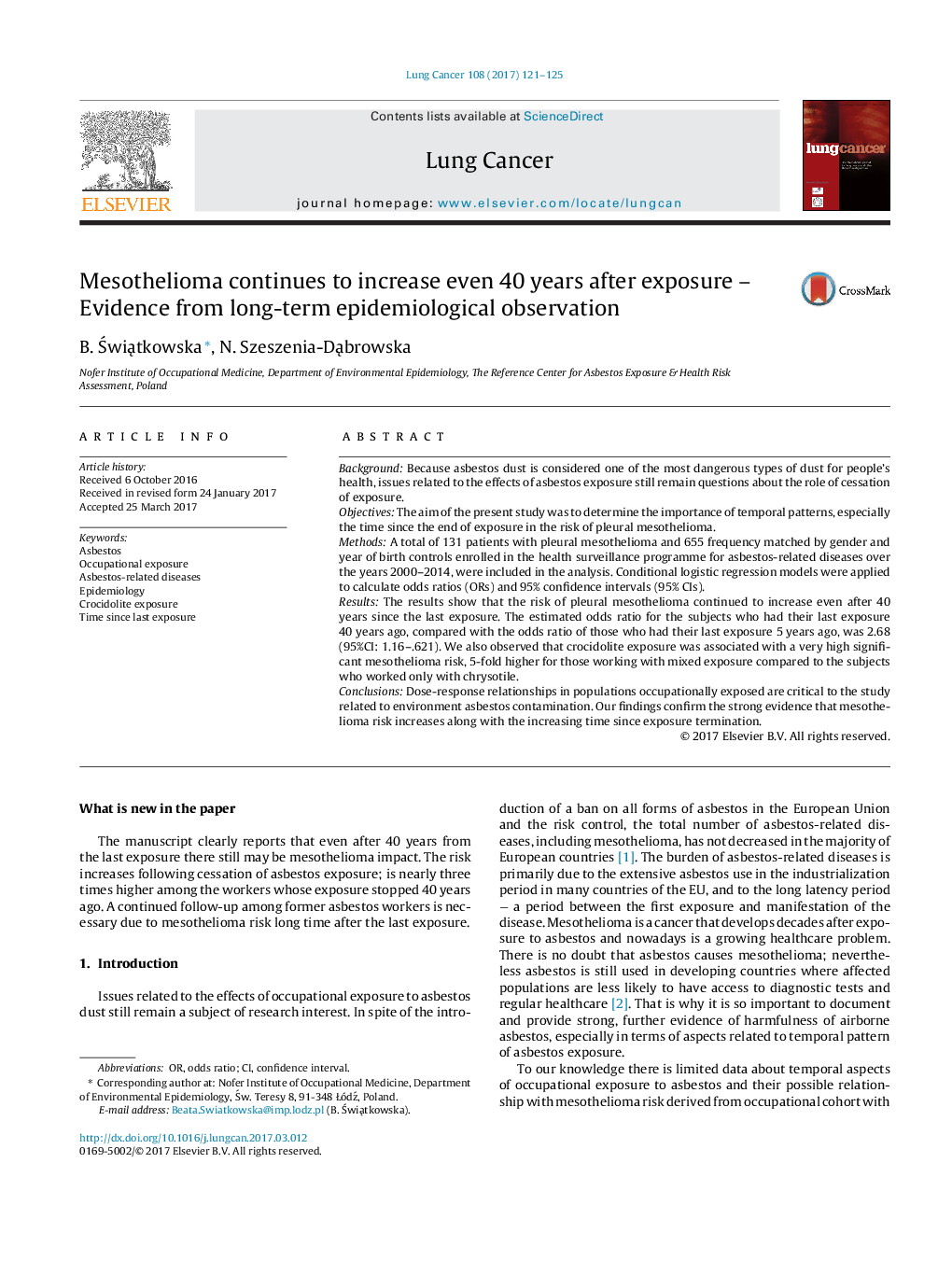| Article ID | Journal | Published Year | Pages | File Type |
|---|---|---|---|---|
| 5528187 | Lung Cancer | 2017 | 5 Pages |
â¢We investigated whether mesothelioma risk continued to increase after asbestos termination.â¢Nearly three-fold risk was related to exposure that stopped 40 years ago.â¢Crocidolite exposure was associated with a higher mesothelioma risk than chrysotile exposure.â¢Even after long time after exposure termination still may be mesothelioma impact.â¢A continued follow-up among former asbestos workers is necessary.
BackgroundBecause asbestos dust is considered one of the most dangerous types of dust for people's health, issues related to the effects of asbestos exposure still remain questions about the role of cessation of exposure.ObjectivesThe aim of the present study was to determine the importance of temporal patterns, especially the time since the end of exposure in the risk of pleural mesothelioma.MethodsA total of 131 patients with pleural mesothelioma and 655 frequency matched by gender and year of birth controls enrolled in the health surveillance programme for asbestos-related diseases over the years 2000-2014, were included in the analysis. Conditional logistic regression models were applied to calculate odds ratios (ORs) and 95% confidence intervals (95% CIs).ResultsThe results show that the risk of pleural mesothelioma continued to increase even after 40 years since the last exposure. The estimated odds ratio for the subjects who had their last exposure 40 years ago, compared with the odds ratio of those who had their last exposure 5 years ago, was 2.68 (95%CI: 1.16-.621). We also observed that crocidolite exposure was associated with a very high significant mesothelioma risk, 5-fold higher for those working with mixed exposure compared to the subjects who worked only with chrysotile.ConclusionsDose-response relationships in populations occupationally exposed are critical to the study related to environment asbestos contamination. Our findings confirm the strong evidence that mesothelioma risk increases along with the increasing time since exposure termination.
